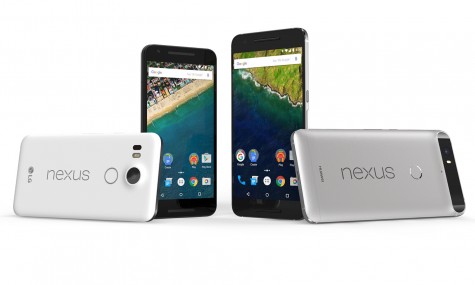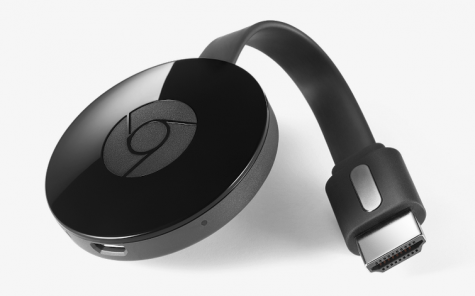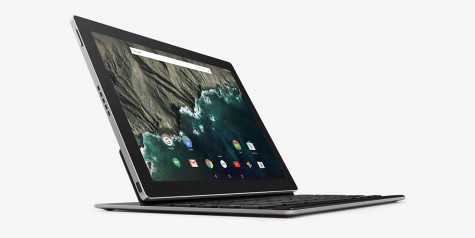Google’s New Lineup
This summer, Google announced the latest version of its Android operating system. Dubbed Android Marshmallow, version 6.0 of Android features improvements under the hood, new tools for developers and several new features. Among other things, Marshmallow introduces Now On Tap, which allows Google’s software to analyze the content of an app and provide information accordingly. For instance, if you and a friend are discussing a movie, summoning Now On Tap by pressing and holding the home button will bring up details about the movie, such as actors and show times. New developer tools allow for easy implementation of reversible “USB-C” charging cables and fingerprint sensors in future phones.
Just a few weeks ago, Google executives returned to the stage to announce its latest hardware. Google usually introduces new Nexus devices to accompany the latest version of Android. These phones and tablets are designed to guide the development of the next generation of Android phones. This year, Google showed off its latest Nexus phones: the Nexus 6P and Nexus 5X. While retaining the great qualities of its recent Nexus 6 and Nexus 5 smartphones, Google improved its designs and added some new features.
The Nexus 6P is Google’s premium flagship phone, and it’s pretty big. While the 6P is still a massive phone, it is more portable than the Nexus 6 before it, which barely fit into pockets or car cup holders. The unwieldy 5.9-inch display of the Nexus 6 has been swapped out for a more modest 5.7-inch screen on the 6P. Despite this reduction in screen size, the 6P retains the same sharp 1080p resolution as its predecessor, meaning the display is just as good-looking as before. Google spent a portion of its presentation discussing the camera of the 6P, which is leaps and bounds better than any Nexus before it. The 12-megapixel shooter on the back of the 6P captures clear, vibrant shots, even in low light, rivaling the cameras of the iPhone 6s and Samsung Galaxy S6. This jump in camera quality is not without a compromise, however; the 6P has a noticeable hump on its back where the new camera is located. While this may be a drawback for some, Google has done a decent job of incorporating the protruding camera into the 6P’s exterior. Speaking of the exterior of the phone, the 6P features a new all-metal shell emblazoned with the classic Nexus logo. Designed by Chinese company Huawei, the 6P is a drastic design change from that of the Motorola-designed Nexus 6, which resembled its Moto X smartphone. The sleek metal design gives the 6P a more solid feel in the hand. The Nexus 6P also includes a new fingerprint sensor, built with technology Google calls “Nexus Imprint.” Positioned on the back of the phone, the 6P’s Nexus Imprint sensor is able to read a fingerprint in 600 milliseconds or less. With one tap on the sensor, a user can unlock his or her phone immediately and bypass the lock screen entirely. The 6P features the relatively new USB-C connector for charging. Unlike the microUSB ports present in most Android phones, the USB-C port allows the cable to be inserted either way. The Nexus 6P also jumps ahead of last year’s 6 in price. While the Nexus 6 was priced similarly to other flagship phones like the iPhone and Samsung Galaxy, the 6P starts at just $500, so it won’t break the bank.
Google also announced the Nexus 5X. Intended as a cheaper alternative to the 6P, the 5X echoes the design and size of the 2013 Nexus 5. Designed by LG, the company that also designed the 5, the Nexus 5X isn’t a huge departure from the design of its predecessor. It features a sleeker, more streamlined shape, a slightly larger 5.2-inch 1080p display and a new camera which protrudes from the middle of the phone. The 5X’s camera is identical to that of the 6P, and the Nexus Imprint sensor is just as accurate and fast as the 6P’s. It even has the same reversible USB-C connector as the 6P. It compromises on speed, with a processor that is not quite as fast as the 6P. This pays off, quite literally, in the price of the phone. The 5X starts at a reasonable $379, which is nearly half of what some phones cost today.
Google had a few surprises in store at its event, the first of which was a new Chromecast. The Chromecast, Google’s minuscule $35 streaming device, received a design refresh. The new, smaller Chromecast is even harder to notice behind a flat-screen TV and allows for streaming directly from many apps. Google also added a new product to the Chromecast lineup, known as Chromecast Audio. Chromecast Audio promises high fidelity, lag-free audio streaming when connected to a speaker system. The final announcement Google made was its new Pixel C tablet. Like the Chromebook Pixel Google introduced in 2013, the Pixel C is a high-quality device with a premium metal design. The main draw of the Pixel C is its new all-metal keyboard cover, which attaches magnetically to the Pixel C and closes like a laptop. The Pixel C will see commercial release in the not-too-distant future.
Google’s September event proved to be exciting in many ways. Its new Nexus phones showcased the features of Android Marshmallow and further pushed the concept of the Android smartphone. The new Chromecast and Chromecast Audio are affordable ways to stream content, and are the most enticing streaming devices to date. The Pixel C tablet demonstrates the versatility and capability of Android. Evidently, Google has demonstrated that it can move its ecosystem forward and compete with rivals like Apple, Samsung and Microsoft.






